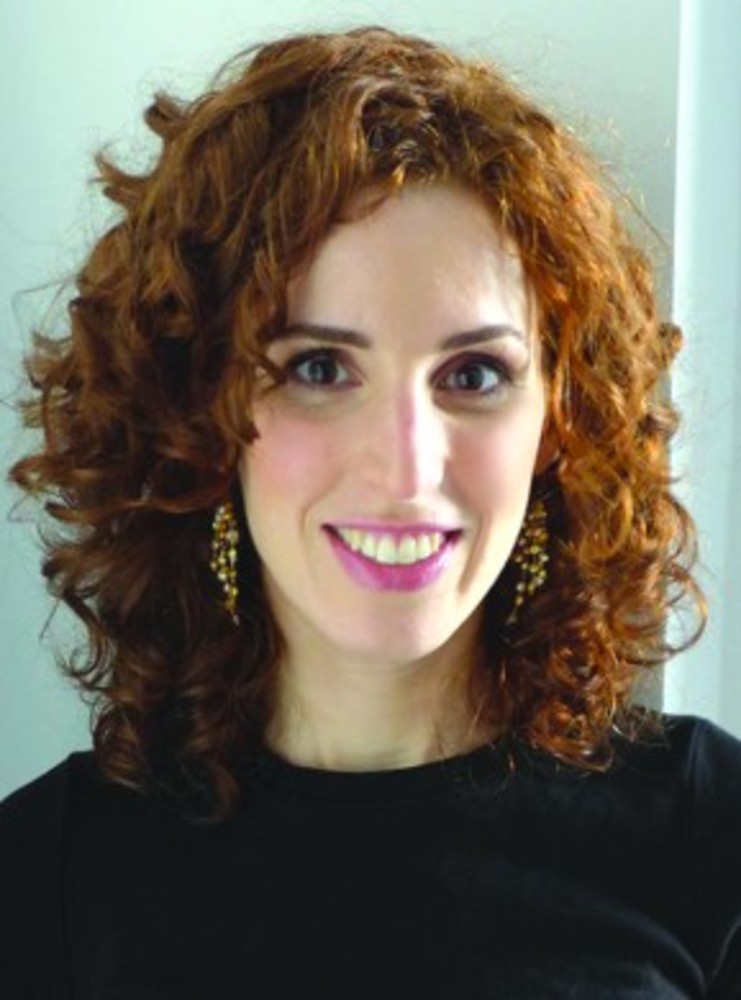Elizabeth Green offers hope in ‘Building a Better Teacher’
 Elizabeth Green
Elizabeth Green
Annual conference focuses on what makes a great teacher
Everyone agrees that a great teacher can have an impact but we still don’t know exactly what makes a teacher great.
Does great teaching come naturally or does it take something more? Join special guest Elizabeth Green, author of “Building a Better Teacher,” at the Sanford z’’l and Elaine Kroll Educators Conference on Oct. 26. Registration and a light breakfast begin at 8:30 a.m. The conference starts at 9 and ends at noon. Green will focus on important questions for teachers and parents. This event, at the Dwares JCC, 401 Elmgrove Ave., Providence, is open to all educators and parents and is free. RSVP to Lynne Bell at 401-421-4111, ext. 156 or lbell@jewishallianceri.org.
Measuring teacher effectiveness is a subject that many of us have a stake in and an informed opinion about. Nearly all of us are products of many years of formal education. We’ve all logged many hours in the classrooms of dozens of teachers. It’s reasonable, then, for each of us to have understanding that supports our opinions about teacher quality. We know from our own experience whether or not individual teachers are great. But it’s likely that we don’t fully comprehend why. This is the terrain of Elizabeth Green’s “Building a Better Teacher”. Green explores these essential questions: what does research tell us about the craft of teaching, and how can we disseminate superb teachers’ knowledge, skills and attitudes?
The opening pages of “Building a Better Teacher” take us into a teacher’s brain as she moves a fifth grade class through a math lesson. Green’s portrayal of the resulting complexity, informed by dynamic, moment-to-moment decisions based on students’ voiced comprehension (or lack thereof) revealed by their questions and comments, reminds us that skillful teaching is hard work that demands powerful intellectual and emotional capacity. In a few pages, Green conveys teaching’s challenge and complexity in a way that makes a potent contribution to public discourse, which all too often seems to evince the belief that teaching is easy.
As “Building a Better Teacher” unfolds, Green examines several, often competing, sometimes intersecting, theories about the factors that support teachers to improve their practice in order to be great. Practice is the key word. Green dispels the notion that there are “natural-born teachers.” Indeed, research clearly leads to the conclusion that good teaching is the result of study, refinement and collegial support. But our desire for quick results as well as the culture of many schools unaccustomed to providing time and support for building a collaborative professional community have presented obstacles to widespread implementation of this approach.
The issue of professional working conditions arises as a frustrating challenge. Short school days combined with intense demands make for often defeating conditions in which it’s nearly impossible to initiate, scale, and sustain improvement. Teachers function in a policy environment based – somewhat misguidedly, as Green describes – on the notion that a great teacher can surmount hugely significant factors in students’ lives such as health, economic status, housing and family support. This is coupled with demands that teachers demonstrate results more or less immediately, with no change in working conditions or meaningful professional development. Nationwide, we’re wrestling with not only how but also why we should evaluate teachers. Are we evaluating teachers to support their work in systematic and thoughtful ways? Or are we doing so to reveal and discard the putative “bad apples?” Most state and district approaches have been muddled at best, contributing the heat of anxiety without the light of understanding. The very fact that we acknowledge teachers’ importance has contributed to making it much less likely that they’ll be able to do their work effectively.
However, “Building a Better Teacher” also gives us real hope, as it shares what a range of practitioners and researchers have come to understand about the alchemy of a successful classroom. Descriptions of the language that has been developed to describe teaching and learning provide real thrills, particular as Green reveals the thoughtfully collaborative approach of Japanese educators’ jugyokenkyu, or lesson study, and the compelling, though easily misinterpreted, taxonomical approach of Uncommon Schools’ Doug Lemov. Readers gain a sense that we know what constitutes the basis for powerful teaching and learning, even if we don’t yet have the patience and appropriate professional conditions for that understanding to be implemented widely. When teachers have the conditions and passion to dig deeply into the process of teaching and learning in a supportive professional culture, they can consistently produce amazing results.
JILL DAVIDSON is a resident of Providence and the director of publications and communications at Engaging Schools. She is the mother of three sons in the Providence Public Schools.







